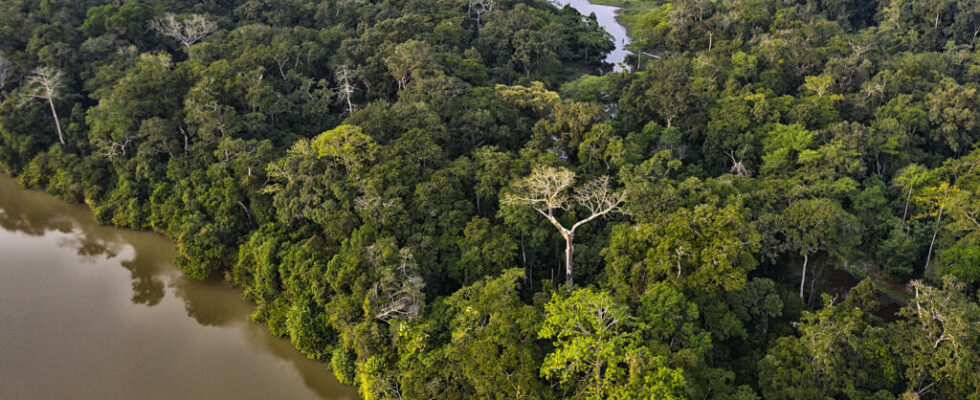As COP16 biodiversity begins its second week in Colombia, the International Union for Conservation of Nature has updated its Red List of Threatened Species which includes, for the first time, a Global Tree Assessment. With rare exceptions, all countries in the world are affected by this development.
5 mins
Trees now account for a quarter of the total number of species listed on the IUCN Red List of Threatened Species : there are 47,282. Of this number, 16,425 are classified as endangered, or nearly 35%. One in three species.
Around a thousand experts and a hundred institutions collaborated over around a decade to arrive at this observation, in association with Botanic Gardens Conservation International. “ This assessment presents the first comprehensive picture of the conservation status of trees, allowing us to make more informed conservation decisions and take action to protect trees where urgently needed. said Malin Rivers, one of the lead authors of the study.
According to the organization, there are now twice as many trees in danger as the total number of threatened populations of birds, mammals, reptiles and amphibians. These species are endangered in 192 countries, specifies the IUCN in a press release.
The organization cites South America, a region particularly lush in biodiversity and home to the greatest diversity of trees on the planet. 3,356 species out of the 13,668 recorded there are threatened with extinction. “ In Brazil, but also in Colombia and Venezuela, the threats are very high », develops Emily Beech, one of the authors, expert at Botanic Gardens Conservation International (at the microphone ofElodie Papin). Africa is not left out: “ Madagascar has a very large number with more than 3 000 species, most of them endemic. More than 60% are threatened with extinction. » In Ghana, the Talbotiella Gentii is in critical danger of extinction, explains the scientist: there are only 13 populations left… The cause: agriculture and the production of charcoal.
Most of the endangered trees are found on the islands. The smallness of the territories has led to overexploitation of land. But the threats are the same all over the world, starting with deforestation for the development of cities and agricultural land. Invasive species, pests and diseases, such as the bark beetle or ash blight, two fungi, are also identified causes of tree disappearance. As for climate change, if it reinforces other threats, it is also one in itself, “ especially in tropical areas, through rising waters, and more powerful and frequent storms “.
At the heart of complex ecosystems
“ Tree loss poses a major threat to thousands of other plants, fungi and animals », further specifies the IUCN. Trees are crucial for regulating the Earth’s climate system. They make it possible to capture the carbon emitted into the atmosphere, they play a major role in the water and food cycle, and in maintaining the soil. Finally, they are a refuge of biodiversity, both shelter and food source for many animals, and therefore at the heart of complex ecosystems: “ most interactions between species are not yet well understood. So the priority is to ensure that no tree species disappears to protect these interactions. », Recommends Emily Beech. “ More than two-thirds of globally threatened bird species depend on forests, alerts Cleo Cunningham, head of climate and forests at Birdlife International. This report must be taken seriously; for local communities and indigenous peoples who depend on forests, for wildlife who depend on trees, and to strengthen the resilience of forests to climate change. »
Trees are also an essential resource for the lives of millions of people. More than 5,000 species listed by the IUCN are used in the construction sector and more than 2,000 for food, energy or health. Example: the bark of the chinchona tree, discovered in Peru in the 18th century and which appears on the national coat of arms, contains quinine, used against malaria.
Also readCinchona, quinine and chloroquine, story of a tree and a substance
The solutions put forward by the IUCN to prevent a massacre are known and already used in some places: the protection and restoration of natural areas or even the conservation of seeds. “ In Ghana, we carried out a project to restore two plots of Talbotiella Gentii forests in order to increase the population of this species, but also to raise awareness among local populations. “, explains Emily Beech.
“ Without biodiverse ecosystems, which include healthy and diverse tree populations, the world will face an even greater climate threat than we already face. COP16 in Colombia this week provides an opportunity for the public and private sectors to not only talk about – but also make – investments that benefit climate, species and people “, urged Dave Hole, vice-president of global solutions at the NGO Conservation International.
In total, the IUCN Red List, established 60 years ago, includes 166,061 living animal and plant species for which solid scientific data exists – the majority of the estimated 8 million species on the planet remain unknown. On this basis, 46,337 are threatened, 926 are extinct, 10,235 are said to be “critically endangered”, 18,688 “endangered”, 17,414 are “vulnerable”.
Also readCutting down or preserving the forest: a delicate balance to find
